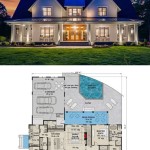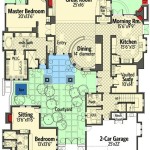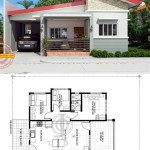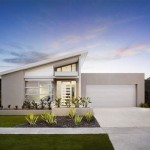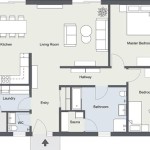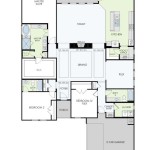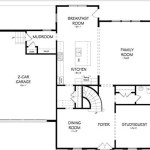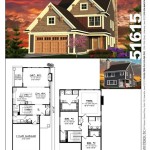Floor Plan For Tiny House: Maximizing Space and Functionality
The burgeoning interest in tiny house living necessitates a careful consideration of floor plans. Designing a functional and comfortable living space within a limited footprint presents unique challenges, requiring innovative solutions and a deep understanding of spatial optimization. A well-designed floor plan is paramount to the success of a tiny house, impacting not only livability but also long-term satisfaction with the lifestyle.
The effective use of space is the cornerstone of tiny house design. This involves prioritizing essential functions, minimizing redundancies, and employing multi-purpose elements. The floor plan should cater specifically to the needs and lifestyle of the occupants, ensuring that the house feels like a home and not simply a cramped shelter. This article explores key considerations and principles in designing a floor plan for a tiny house, focusing on maximizing space and functionality.
Understanding the Tiny House Lifestyle and Spatial Needs
Before embarking on the design process, a thorough understanding of the intended lifestyle within the tiny house is crucial. This involves honestly assessing daily routines, hobbies, and storage requirements. Will the house be a primary residence, a vacation getaway, or a rental unit? How many occupants will the house accommodate, and what are their individual needs and preferences?
Answering these questions will provide a framework for determining the size and layout of the tiny house. For example, individuals who work remotely may prioritize a dedicated workspace, while avid cooks will require a functional kitchen with ample counter space and storage. Those who enjoy entertaining may want to incorporate flexible seating arrangements that can be easily reconfigured for gatherings.
Storage is another critical consideration. Tiny houses inherently lack the expansive storage options of conventional homes, requiring creative solutions for organizing belongings. This may involve incorporating built-in storage throughout the house, utilizing vertical space effectively, and decluttering regularly to minimize clutter. The floor plan should reflect a commitment to minimalism and a willingness to streamline possessions to fit within the allocated space.
Furthermore, consider the accessibility needs of potential occupants. Universal design principles, such as wider doorways, roll-in showers, and accessible countertops, can enhance the usability of the tiny house for people of all ages and abilities. Planning for future mobility challenges can prevent the need for costly renovations down the line.
Essential Elements of a Functional Tiny House Floor Plan
A well-designed tiny house floor plan typically incorporates several essential elements, each contributing to the overall functionality and livability of the space. These elements include a sleeping area, a kitchen, a bathroom, a living/dining area, and storage solutions. The placement and configuration of these elements should be carefully considered to optimize space utilization and create a comfortable flow within the house.
Sleeping areas in tiny houses often utilize loft spaces to maximize headroom in the main living area. While lofts can be a space-saving solution, accessibility should be carefully considered. Ladders and steep stairs can be challenging for some individuals, particularly those with mobility limitations. Alternatives include ground-floor bedrooms or sleeping platforms that can be easily accessed.
Kitchens in tiny houses should be compact yet functional. Prioritize essential appliances, such as a refrigerator, cooktop, and sink, and opt for smaller-scale models whenever possible. Consider incorporating multi-purpose countertops that can be used for food preparation, dining, and workspace. Efficient storage solutions, such as pull-out drawers, shelving, and vertical organizers, are essential for maximizing kitchen space.
Bathrooms in tiny houses typically consist of a toilet, sink, and shower. Space-saving options, such as composting toilets, corner sinks, and shower stalls, can help maximize the limited square footage. Consider incorporating features that promote water conservation, such as low-flow fixtures and rainwater harvesting systems. Ventilation is also crucial to prevent moisture buildup and maintain air quality.
Living and dining areas in tiny houses should be flexible and adaptable to various activities. Multi-functional furniture, such as sofa beds, folding tables, and stackable chairs, can be reconfigured to suit different needs. Incorporating natural light through strategically placed windows can create a sense of spaciousness and enhance the overall ambiance of the living area.
Effective storage solutions are paramount in tiny houses. Built-in storage, such as under-bed drawers, wall-mounted cabinets, and hidden compartments, can help maximize space utilization. Consider utilizing vertical space by incorporating shelving and tall storage units. Regularly decluttering and minimizing possessions is essential for maintaining a clutter-free and organized living environment.
Designing for Specific Needs and Preferences
While general principles of tiny house design apply to most situations, the specific needs and preferences of the occupants should ultimately dictate the floor plan. Customization is key to creating a tiny house that truly feels like home and supports the desired lifestyle.
For individuals who prioritize cooking and entertaining, a larger, more functional kitchen may be necessary. This could involve incorporating a larger cooktop, additional counter space, and dedicated storage for cookware and utensils. A breakfast bar or island can provide additional seating and workspace.
Those who work remotely may require a dedicated workspace that is separate from the main living area. This could involve incorporating a built-in desk, ergonomic chair, and adequate lighting. Consider soundproofing the workspace to minimize distractions and create a more productive environment.
For families with children, the floor plan should accommodate the needs of both adults and children. This may involve incorporating bunk beds, play areas, and storage solutions for toys and games. Safety considerations, such as child-proof cabinets and stair railings, are also essential.
Individuals with mobility limitations may require a more accessible floor plan with wider doorways, roll-in showers, and accessible countertops. Consider incorporating features that promote independent living, such as grab bars, lever handles, and remote-controlled appliances.
Furthermore, consider the climactic conditions of the region where the tiny house will be located. In hot climates, orienting the house to minimize sun exposure and incorporating passive cooling strategies, such as cross-ventilation and shading, can help reduce energy consumption. In cold climates, proper insulation and efficient heating systems are essential for maintaining a comfortable living environment.
Ultimately, the design of a tiny house floor plan is a collaborative process that involves careful consideration of spatial needs, functional requirements, and personal preferences. By prioritizing essential elements, maximizing space utilization, and customizing the design to suit individual needs, it is possible to create a small living space that is both comfortable and functional.
Detailed 3D models and virtual reality walkthroughs can be used to visualize the space and identify potential design flaws before construction begins. This allows for adjustments to be made early in the process, saving time and money. Professional designers or architects specializing in tiny house design can provide valuable guidance and expertise throughout the planning process.

Tiny House Floor Plans With Lower Level Beds Tinyhousedesign Design

Easy Tiny House Floor Plan Designs

Tiny House Design Floor Plans

Tiny House Plan Examples

Tiny House Floor Plans 32 Home On Wheels Design

Tiny House Floor Plans With Lower Level Beds Tinyhousedesign

2 William S Tiny House First Floor Plan Top And Mezzanine Bottom Scientific Diagram

12 X 20 Tiny Home Designs Floorplans Costs And More The Life

Tiny House Floor Plans Absolute Houses

10 X 20 Tiny Home Designs Floorplans Costs And Inspiration The Life

